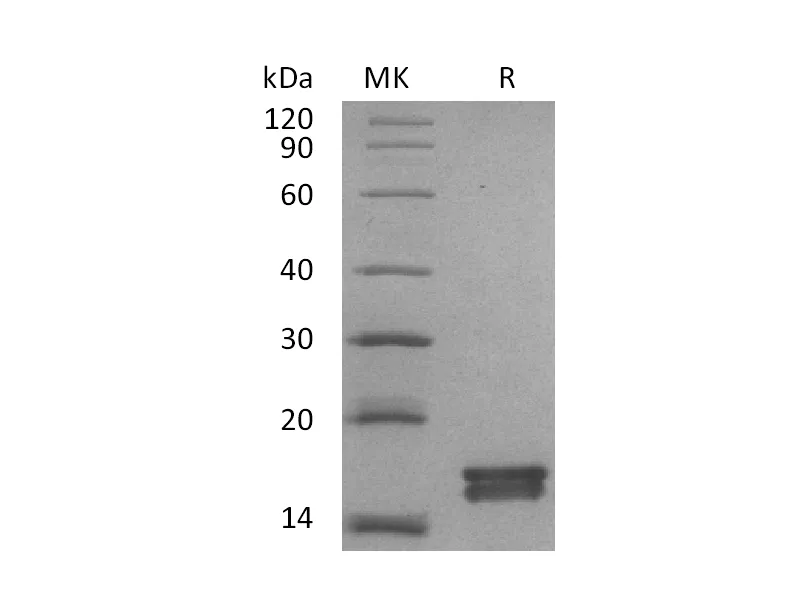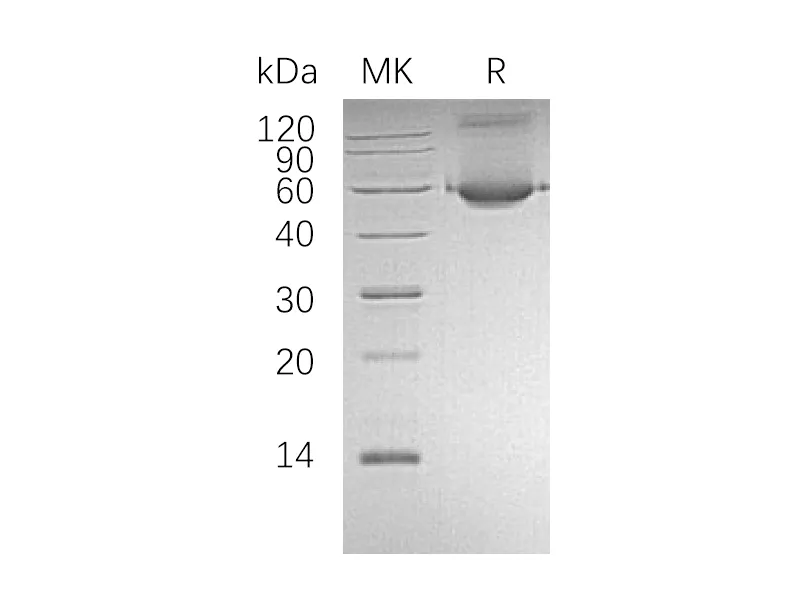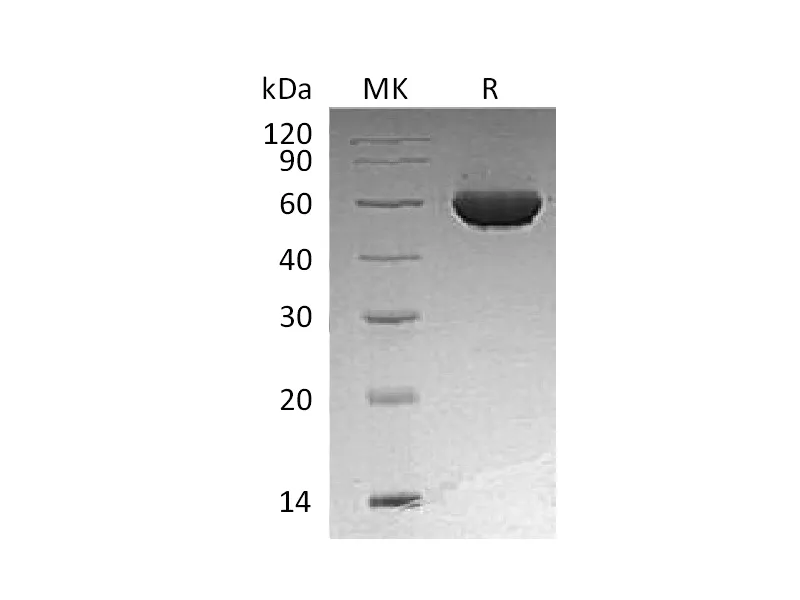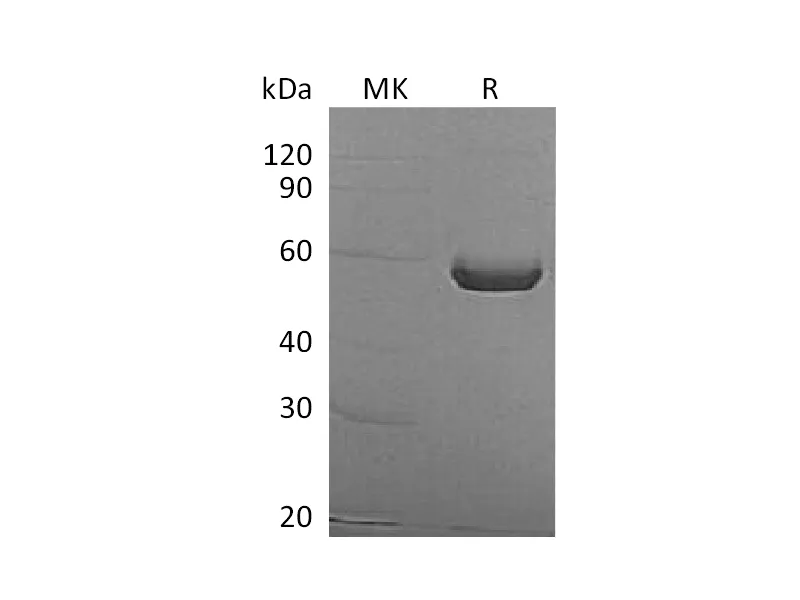Alternative Names
TNFRSF12A; Fibroblast growth factor-inducible immediate-early response protein 14; FN14; CD266 antigen and tweak-receptor
Background
Tumor necrosis factor receptor superfamily member 12A(TNFRSF12A) is also known as Fibroblast growth factor-inducible immediate-early response protein 14, FN14, CD266 antigen and tweak-receptor. TNFRSF12A is a single-pass type I membrane protein, including a 27 aa signal peptide, a 53 aa extracellular domain, a 21 aa transmembrane domain and a 28 aa cytoplasmic domain. TNFRSF12A is highly expressed in heart, placenta and kidney. TNFRSF12A can be induced by FGF1 and phorbol ester. TNFRSF12A binds to TWEAK/TNFSF12A to initiate a signal transduction cascade, causing different cellular responses such as cell death, cell proliferation, and angiogenesis.
Note
For Research Use Only , Not for Diagnostic Use.




